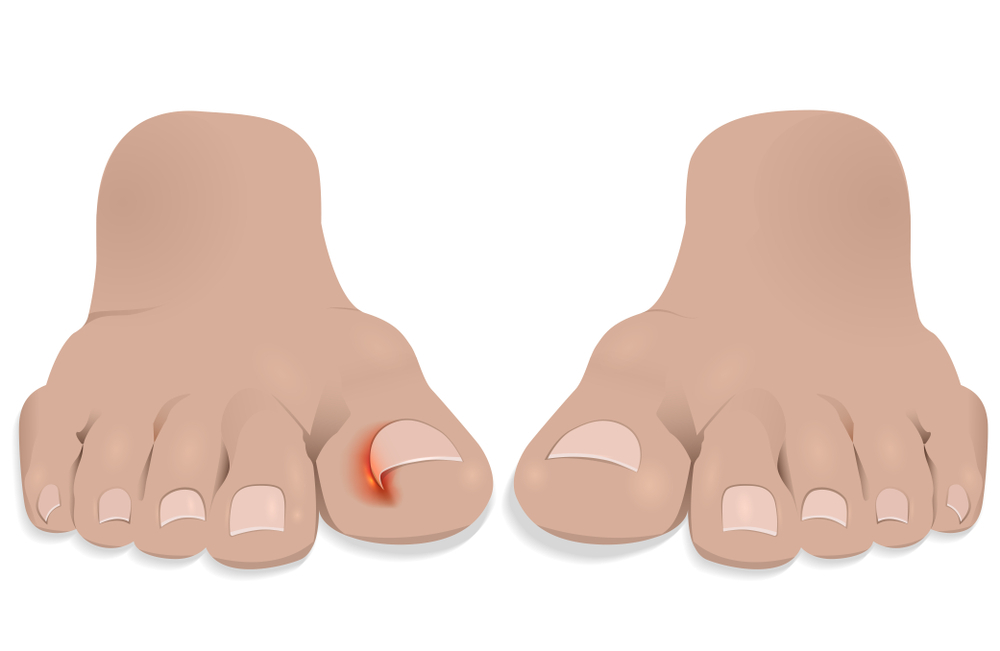One of the things we focus on most in foot care is nail care. Ingrown toenails are one of the most common problems we encounter. So how can we deal with this problem?
In daily life, we come to the fore with our clothing, accessories, speech, in short, our style; but there is such a detail that, as they say, the devil is in the details, here is exactly such a detail. A detail that gives a quick clue about your personality; your nails!
Having well-groomed and beautiful nails is not only important for your health, but also an important indicator for your personality. From your cleaning habits to the importance you attach to detail, the nails that tell the other side at a glance can create minor problems for us at some point in our lives. Ingrown toenails are the most common of these problems.
What is ingrown toenails?
This health problem, which is especially common in toenails, can be eliminated with simple interventions you can do at home; but in advanced cases, it is necessary to seek professional help. Ingrown nail, which occurs when the nail tip that grows in the nail bed bends and enters the finger meat, can cause quite a pain and make daily life unbearable. It can even cause infection in its later stages. An infected nail ingrown can cause swelling in the finger, as well as an inflammatory discharge. So what causes ingrown toenails?
Causes of ingrown toenails
- Imbalance between the nail bed and nail length causes ingrowth. Being larger than the nail bed can inevitably cause ingrown toenails.
- Nails cut shorter than they should increase the risk of ingrown toenails.
- Toenails should be trimmed straight. Toenails cut in an oval shape pose a risk for ingrown toenails.
- If an accident has caused an injury to your fingers, this injury may be accompanied by an ingrown toenail.
- Some nails are genetically very curved, which greatly increases the risk of ingrown toenails. People with this genetic trait need to be more careful and check their nails regularly.
- Narrow shoes will cause the nail to curl in the nail bed due to the pressure they put on the nail.
Symptoms and treatment of ingrown toenails
If your complaints such as tenderness in the nail bed, redness and swelling around the nail are accompanied by a significant increase in temperature in your nail, you probably suffer from ingrown toenails. If these complaints are accompanied by inflammatory discharge, you should seek professional help before it is too late.
If you have diabetes, keep in mind that ingrown toenails can become a serious problem. If you have an ingrown toenails problem, you can prevent this problem at the beginning of the road with a few small methods at home. What you can do at home for ingrown toenails?
Best home remedies for ingrown toenails
Any ingrown toenail corrector can help you with your ingrown nail problem. You can quickly treat your ingrown toenails thanks to this apparatus that you can apply yourself at home.
- Hot water bath: Hot water will help reduce swelling due to the ingrown toenail on your nail and will reduce your pain. Adding soap or salt to this method, which you will apply several times a day, will help you relax faster.
- Vinegar: There is little that is not useful in vinegar, the miracle that nature has given us. Vinegar, which effectively prevents the risk of infection in ingrown toenails with its antiseptic and anti-inflammatory properties, can be applied directly to the problematic toe nail or you can add it to your hot water bath.
- Nail protector: Nail protective barriers, which act as a cushion for ingrown toenails, will prevent the progression of the problem and will make you comfortable during the day.

